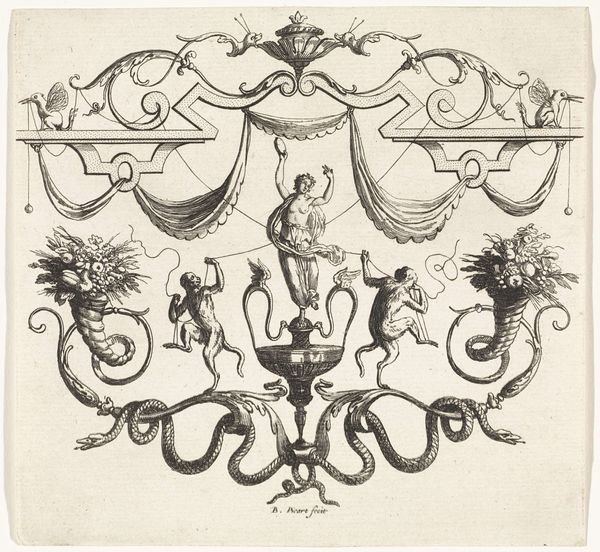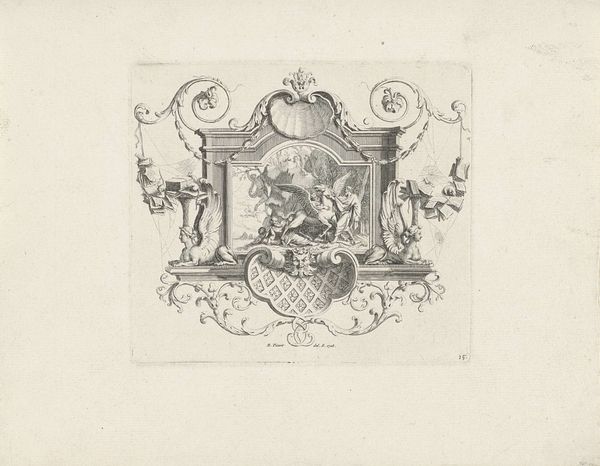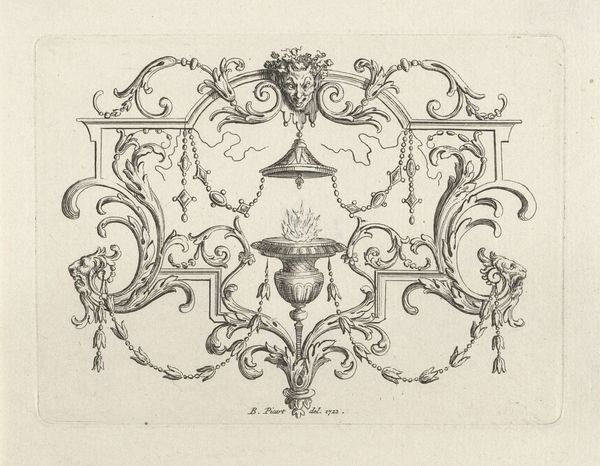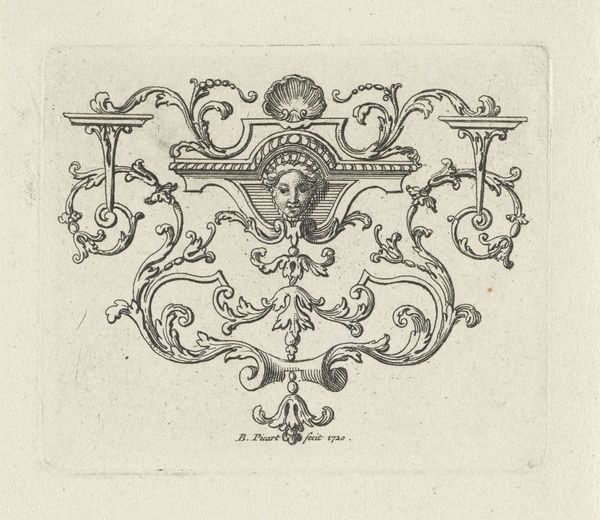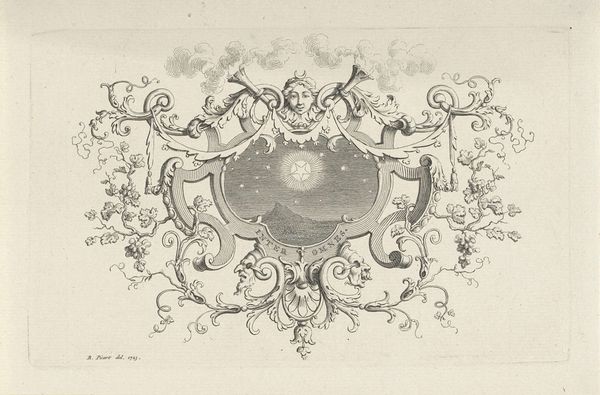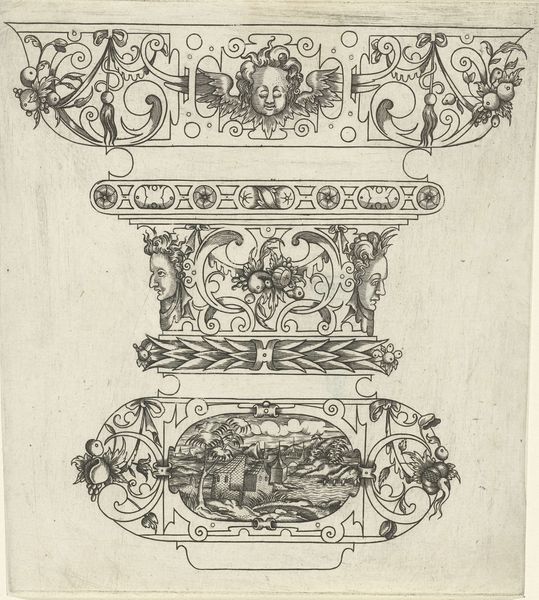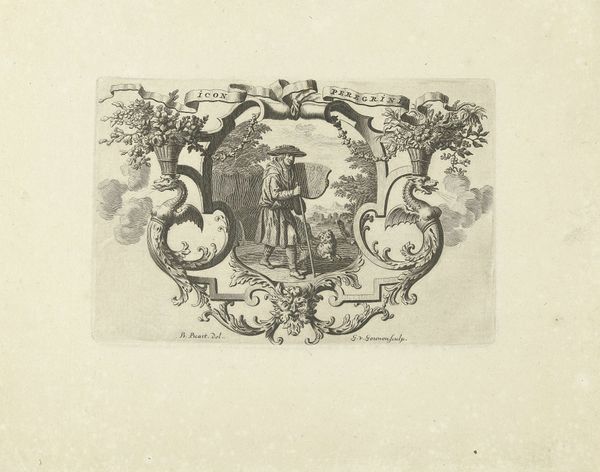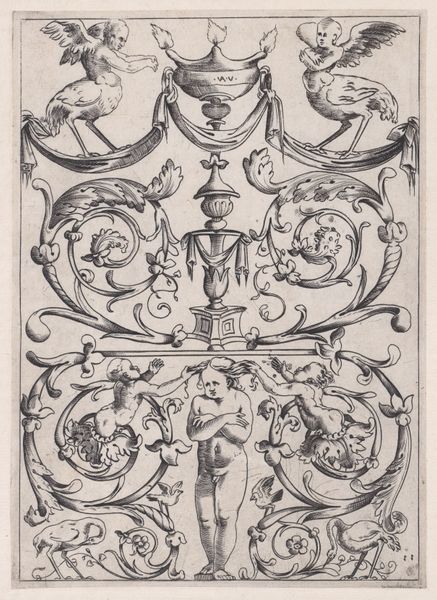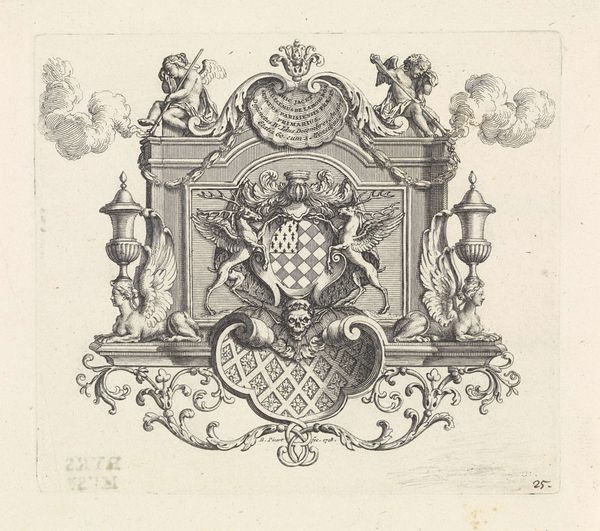
engraving
#
baroque
#
pen illustration
#
line
#
genre-painting
#
engraving
Dimensions: height 76 mm, width 77 mm
Copyright: Rijks Museum: Open Domain
Bernard Picart created this ornament with two music-making putti in 1721. It’s an etching, a print made from an incised metal plate. It's worth noting that in the early 18th century, the Dutch Republic, where Picart worked, was a major center for printmaking. Prints had a practical function and were used as illustrations in books, as political satires, and as disseminators of artistic styles. This print, with its symmetrical design, could be used by craftsmen as a model. The putti, or cherubic figures, are a classical motif often used to create an impression of elegance. The instruments they play, the trumpet and the lute, were associated with nobility. The inclusion of a flaming altar suggests a connection with ritual or ceremony. This print gives us an insight into the visual culture and the artistic institutions of the time. To understand it better, we can look into the pattern books of the period, the history of printmaking, and the classical symbolism that would have been familiar to Picart’s audience.
Comments
No comments
Be the first to comment and join the conversation on the ultimate creative platform.
